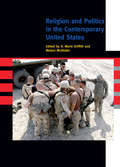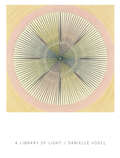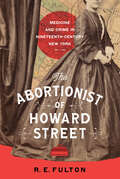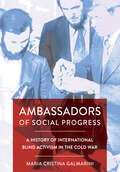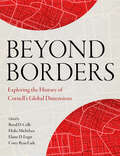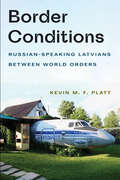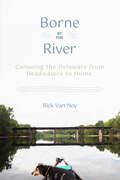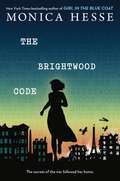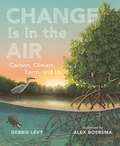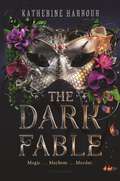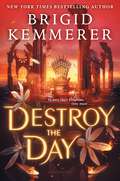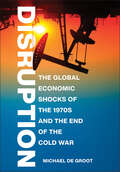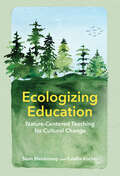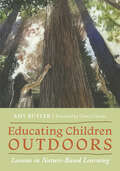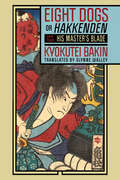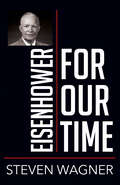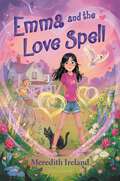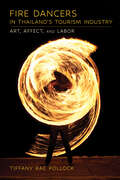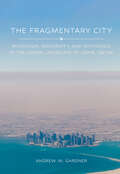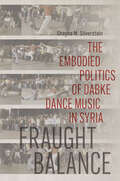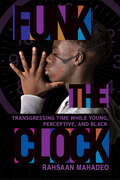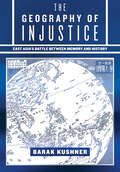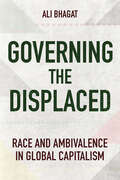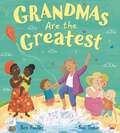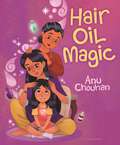- Table View
- List View
Religion and Politics in the Contemporary United States (A Special Issue of<I> American Quarterly</I> <I> </I>)
by R. Marie Griffith Melani McAlisterThis collection of essays from a special issue of American Quarterly explores the complex and sometimes contradictory ways that religion matters in contemporary public life.Religion and Politics in the Contemporary United States offers a groundbreaking, cross-disciplinary conversation between scholars in American studies and religious studies. The contributors explore numerous modes through which religious faith has mobilized political action. They utilize a variety of definitions of politics, ranging from lobbying by religious leaders to the political impact of popular culture. Their work includes the political activities of a very diverse group of religious believers: Christians, Jews, Muslims, Hindus, Buddhists, and others. In addition, the book explores the meanings of religion for people who might contest the term—those who are spiritual but not religious, for example, as well as activists who engage symbols of faith and community but who may not necessarily consider themselves members of a specific religion. Several essays also examine the meanings of secular identity, humanist politics, and the complex evocations of civil religion in American life.No other book on religion and politics includes anything like the diversity of religions, ethnicities, and topics that this one does—from Mormon political mobilization to attempts at Americanizing Muslims in the post-9/11 United States, from César Chávez to James Dobson, from interreligious cooperation and conflict over Darfur to the global politics surrounding the category of Hindus and South Asians in the United States.
A Library of Light (Wesleyan Poetry Series)
by Danielle VogelWhen poet Danielle Vogel began writing meditations on the syntax of earthen and astral light, she had no idea that her mother's tragic death would eclipse the writing of that book, turning her attention to grief's syntax and quiet fields of cellular light in the form of memory. Written in elegant, crystalline prose poems, A Library of Light is a memoir that begins and ends in an incantatory space, one in which light speaks. At the book's center glows a more localized light: the voice of the poet as she reflects, with ceremonial patience, on the bioluminescence of the human body, language's relationship to lineage, her mother's journals written during years of estrangement from her daughter, and the healing potential of poetry. A mesmerizing elegy infused with studies of epigenetic theory and biophotonics, A Library of Light shows that to language is to take part in transmission, transmutation of energy, and sonic (re)patterning of biological light.[sample poem]When we are. When we are there, we lay together and cover ourselves with our voices. When we are ten, we are also twenty-one. We speak of breathing, but this is a thing we cannot do. When we are seven, we are also eighteen. When we are eighteen, we begin our bodies. But we are unmappable,unhinged. A resynchronization of codes, thecrystalline frequencies of stars, seeds, vowels, lying dormant within you. We are the oldest dialect. Asound the voice cannot make but makes.
The Abortionist of Howard Street: Medicine and Crime in Nineteenth-Century New York
by R.E. FultonJosephine McCarty had many identities. But in Albany, New York, she was known as "Dr. Emma Burleigh," the abortionist of Howard Street.On January 17, 1872, McCarty boarded a streetcar in Utica, New York, shot her ex-lover in the face, and disembarked, unaware that her bullet had passed through her target's head and into the heart of the innocent man sitting beside him. The unlucky passenger died within minutes. Josephine McCarty was arrested for attempted murder and quickly became the most notorious woman in central New York. The Abortionist of Howard Street was, however, far more than a murderer. In Maryland she was "Johnny McCarty," a blockade runner and spy for Confederate forces. New Yorkers whispered of her as a mistress to corrupt Albany politicians. So who was she?The prosecution in her murder trial claimed she was a calculating and heartless operative both in the bedroom and in her public life. Or was she the victim of ill fortune and the systemic weight of misogyny and male violence? The answer, of course, was not as simple as either narrative. In this absorbing and rich history, R.E. Fulton considers the nuances of Josephine McCarty's life from marriage to divorce, from financial abuse to quarrels with intimate partners and more, trying to decipher the truth behind the stories and myths surrounding McCarty and what ultimately led her to that Utica streetcar with a pistol in her dress pocket. In The Abortionist of Howard Street, Fulton revisites a rich history of women's experience in mid-nineteenth century America, revealing McCarty as a multifaceted, fascinating personification of issues as broad as reproductive health, education, domestic abuse, mental illness, and criminal justice.
Ambassadors of Social Progress: A History of International Blind Activism in the Cold War (NIU Series in Slavic, East European, and Eurasian Studies)
by Maria Cristina GalmariniAmbassadors of Social Progress examines the ways in which blind activists from the Soviet Union and Eastern Europe entered the postwar international disability movement and shaped its content and its course. Maria Cristina Galmarini shows that the international work of socialist blind activists was defined by the larger politics of the Cold War and, in many respects, represented a field of competition with the West in which the East could shine. Yet, her study also reveals that socialist blind politics went beyond propaganda. When socialist activists joined the international blind movement, they initiated an exchange of experiences that profoundly impacted everyone involved. Not only did the international blind movement turn global disability welfare from philanthropy to self-advocacy, but it also gave East European and Soviet activists a new set of ideas and technologies to improve their own national movements. By analyzing the intersection of disability and politics, Ambassadors of Social Progress enables a deeper, bottom-up understanding of cultural relations during the Cold War. Galmarini significantly contributes to the little-studied history of disability in socialist Europe, and ultimately shows that disability activism did not start as an import from the West in the post-1989 period, but rather had a long and meaningful tradition that was rooted in the socialist system of welfare and needed to be reinvented when this system fell apart.
Beyond Borders: Exploring the History of Cornell's Global Dimensions
by Royal D. Colle, Heike Michelsen, Elaine D. Engst and Corey Ryan EarleBeyond Borders highlights and celebrates Cornell University's many historical achievements in international activities going back to its founding. This collection of fifty-eight short chapters reflects the diversity, accomplishments, and impact of remarkable engagements on campus and abroad. These vignettes, many written by authors who played pivotal roles in Cornell's international history, take readers around the world to China and the Philippines with agricultural researchers, to Peru with anthropologists, to Qatar and India with medical practitioners, to Eastern Europe with economists and civil engineers, to Zambia and Sierra Leone with students and Peace Corps volunteers, and to many more places. Readers also will learn about Cornell's many international dimensions on campus, including the international studies and language programs and the library and museum collections. Beyond Borders captures how—by educating generations of global citizens, producing innovative research and knowledge, building institutional capacities, and forging mutually beneficial relationships—Cornell University has influenced positive change in the world.Beyond Borders was supported by CAPE (Cornell Academics and Professors Emeriti).
Border Conditions: Russian-Speaking Latvians between World Orders (NIU Series in Slavic, East European, and Eurasian Studies)
by Kevin M. PlattBorder Conditions combines history and memory studies with literary and cultural studies to examine lives at the limits of contemporary Europe: Russian speakers living in Latvia. Since the fall of the USSR in 1991, Latvia's Russian speakers have balanced between Russia and Europe as well as a socialist past, a capitalist and liberal present, and an illiberal regime rising in the Russian Federation. Kevin M. F. Platt describes how members of this population have defined themselves through art, literature, cultural institutions, film, and music—and how others have sought to define them. At the end of the Cold War, many anticipated that societies globally could agree on the meaning of past history and a just politics in the present. The view from the borders of Europe demonstrates the contradictions pertaining to terms like empire, state socialism, liberalism, and nation that have made it impossible to achieve a consensus. In refocusing the examination of state socialism's aftermath around questions of empire and postcolonialism, Border Conditions helps us understand the distinctions between Russian and Western worldviews driving military confrontation to this day.
Borne by the River: Canoeing the Delaware from Headwaters to Home
by Rick Van NoyAfter a near-fatal stroke and a separation, amidst a global pandemic, Rick Van Noy decided to go for a paddle. In Borne by the River, he charts the story of discovery, and healing that came from this solo canoe journey. Paddling two hundred miles on the Delaware River to his boyhood home just upriver from Trenton, New Jersey, Van Noy contemplates his fate and life, as well as the simple joy of sitting in a small boat floating down a large river with his dog, Sully.Deftly combining memoir, natural and local history, and engaging reportage of his encounters with other paddlers and river enthusiasts, including members of the Lenape Nation of Pennsylvania, Van Noy reveals deep and shifting layers of environmental, historical, cultural, and personal significance of the Delaware. Borne by the River reckons with the way that rivers braid into one's own life—thrilling rapids, eddying pauses, and life-changing rifts and falls. Van Noy rediscovers and shares how river journeys can scatter anxieties, wash away regrets, and recreate the spirit in its free-flowing currents.
The Brightwood Code
by Monica HesseIn a breathless, haunting, and rich historical mystery, New York Times bestselling author Monica Hesse speaks to the depths of trauma and the power of memory. Seven months ago, Edda was on the World War I front lines as one of two hundred &“Hello Girls,&” female switchboard operators employed by the US Army. She spent her nights memorizing secret connection codes to stay ahead of spying enemies, and her days connecting vital calls between platoons and bases and generals, all trying to survive—and win—a brutal war. Their lives were in Edda&’s hands, and one day, in fateful seconds, everything went wrong. Now, Edda is back in Washington, DC, working as an American Bell Telephone operator, the picture of respectability. But when her shift ends, Edda is barely hanging on, desperate to forget the circumstances that cut her time overseas short. When Edda receives a panicked phone call from someone who utters the fateful code word &“Brightwood,&” she has no choice but to confront her past. With precious few clues and help only from Theo, a young man bearing his own WWI scars, Edda races to uncover what secrets may have followed her across the ocean. Timely and unforgettable,The Brightwood Code sheds light on hidden history and the brutality of being a woman in a war built by men.
Change Is in the Air: Carbon, Climate, Earth, and Us
by Debbie LevyA nonfiction picture book about amazing ways that the Earth removes carbon from the air, and amazing ways people can help, offering a fresh and hopeful perspective on climate change.The Earth has a problem: there's too much carbon in the air. Luckily, the Earth also has amazing powers to remove carbon dioxide from the atmosphere-like the power of kelp, mangroves, and dirt. Although these powers alone cannot get us out of the climate crisis we're facing, the Earth has another important power: the power of people! People have the power to change, protect, innovate, and invent. In this informational picture book, Debbie Levy and Alex Boersma paint an encouraging yet honest picture of the problems at hand and some of the ways that we can address them. Thanks to the power of nature and the ingenuity of people, change is in the air!
The Dark Fable
by Katherine HarbourMagical heists. Deadly secrets. Come along for the ride . . . if you dare. This heart-stopping, seductive fantasy is perfect for fans of Six of Crows.Evie Wilder is an orphan who has gone through most of her life unnoticed . . . until she's caught up in a dramatic heist and captures the attention of the Dark Fable. They have chosen her for a reason: she can turn invisible. This skill would make Evie a treasured asset to the legendary group of thieves known for spiriting away obscure and occult artifacts.Evie cannot resist their allure and is eager to join this newfound family. But she discovers there are more skeletons in the Dark Fable's past than she could have ever imagined. And these secrets might be the answer to her own tragic past.No one is who they seem to be and the price of uncovering the Dark Fable's cryptic history just might be fatal . . .
Destroy the Day (Defy the Night #3)
by Brigid KemmererIn the thrilling conclusion to the Defy the Night series, New York Times bestselling author Brigid Kemmerer crafts heartrending twists and devastating turns that will keep readers breathless to the very end.Left for dead, but desperate to survive . . . they have one last chance to save their kingdom. Prince Corrick is out of options. Held captive by the vicious Oren Crane, he's desperate to reunite with Tessa, but will need to ally with the rebel leader Lochlan, who until now wished him dead. An unlikely but deadly pair, Corrick and Lochlan must plot their next moves carefully. . . An island away, Tessa Cade is heartbroken and angry. Grieving Corrick, and unsure how to find a way back to Kandala, she doesn't know who to trust. Until Rian--the man she trusts least--makes an offer: aid in a plot to finally oust Oren Crane and see what the future holds. . . Meanwhile in Kandala, Harristan is dethroned and on the run. He's struggling to unite the rebels in his fractured kingdom, but he finds support--and maybe more--in unexpected places.Can Harristan be the king his people need? Can Corrick and Tessa find their way back to each other? As outside threats loom and the fires of revolution burn from within, time is running out to save their kingdom.
Disruption: The Global Economic Shocks of the 1970s and the End of the Cold War
by Michael De GrootIn Disruption, Michael De Groot argues that the global economic upheaval of the 1970s was decisive in ending the Cold War. Both the West and the Soviet bloc struggled with the slowdown of economic growth; chaos in the international monetary system; inflation; shocks in the commodities markets; and the emergence of offshore financial markets. The superpowers had previously disseminated resources to their allies to enhance their own national security, but the disappearance of postwar conditions during the 1970s forced Washington and Moscow to choose between promoting their own economic interests and supporting their partners in Europe and Asia. De Groot shows that new unexpected macroeconomic imbalances in global capitalism sustained the West during the following decade. Rather than a creditor nation and net exporter, as it had been during the postwar period, the United States became a net importer of capital and goods during the 1980s that helped fund public spending, stimulated economic activity, and lubricated the private sector. The United States could now live beyond its means and continue waging the Cold War, and its allies benefited from access to the booming US market and the strengthened US military umbrella. As Disruption demonstrates, a new symbiotic economic architecture powered the West, but the Eastern European regimes increasingly became a burden to the Soviet Union. They were drowning in debt, and the Kremlin no longer had the resources to rescue them.
Ecologizing Education: Nature-Centered Teaching for Cultural Change
by Sean Blenkinsop Estella C. KuchtaEcologizing Education explores how we can reenvision education to meet the demands of an unjust and rapidly changing world. Going beyond "green" schooling programs that aim only to shape behavior, Sean Blenkinsop and Estella Kuchta advance a pedagogical approach that seeks to instills eco-conscious and socially just change at the cultural level. Ecologizing education, as this approach is called, involves identifying and working to overcome anti-ecological features of contemporary education. This approach, called ecologizing education, aims to develop a classroom culture in sync with the more-than-human world where diversity and interdependency are intrinsic.Blenkinsop and Kuchta illustrate this educational paradigm shift through the real-world stories of two public elementary schools located in British Columbia. They show that this approach to learning starts with recognizing the environmental and social injustices that pervade our industrialized societies. By documenting how ecologizing education helps children create new relationships with the natural world and move toward mutual healing, Blenkinsop and Kuchta offer a roadmap for what may be the most potent chance we have at meaningful change in the face of myriad climate crises. Timely, practical, and ultimately inspirational, Ecologizing Education is vital reading for any parent, caregiver, environmentalist, or educator looking for wholistic education that places nature and the environment front and center.
Educating Children Outdoors: Lessons in Nature-Based Learning
by Amy ButlerEducating Children Outdoors is a resource for educators interested in spending extended periods of time in nature with their students. Bringing over two decades of experience working outdoors with teachers and students, Amy Butler offers curricular guidance on nature-based lessons that align with K–12 education standards and build on the innate curiosity and wonder children have for the natural world. This book will help the educator:- Learn successful routines and practices to make learning outdoors safe and engaging- Understand protocols for real and risky play- Draw inspiration from real-life stories from other teachers about learning in nature- Meet NGSS and Common Core standards outdoors with seasonal lessons that are child-centered- Be part of the movement to support children in becoming reconnected with the natural world and the places they call homeWith twenty-five lessons in five units of study spread out across a seasonal school year and appendixes that offer templates for learning, Educating Children Outdoors is essential for educators looking to harvest the benefits of a nature-based curriculum.
Eight Dogs, or "Hakkenden": Part Two—His Master's Blade
by Kyokutei BakinKyokutei Bakin's Nansō Satomi Hakkenden is one of the monuments of Japanese literature. This multigenerational samurai saga was one of the most popular and influential books of the nineteenth century and has been adapted many times into film, television, fiction, and comics.His Master's Blade, the second part of Hakkenden, begins the story of the eight Dog Warriors created from the mystic union between Princess Fuse and the dog Yatsufusa and born into eight different samurai families in fifteenth-century Japan. The first is Inuzuka Shino, orphaned descendent of proud warriors. Left with nothing save a magical sword and the bead that marks him as a Dog Warrior, young Shino escapes his evil aunt and uncle and sets out to restore his family name. Unaware of their karmic bond, Shino and the other Dog Warriors are drawn into a world of vendettas and quests, gallants, and rogues, as each strives to learn his true nature and find his place in the eight-man fraternity.
Eisenhower for Our Time (People for Our Time)
by Steven WagnerEisenhower for Our Time provides an introduction to the Eisenhower presidency, extracting lessons for today's world. Steven Wagner proposes that the need to maintain balance defines Eisenhower's presidency. Wagner examines a series of defining moments that were among Eisenhower's greatest challenges, some of which resulted in his greatest accomplishments: the decision to run for president, his political philosophy of the "Middle Way," the creation of a national security policy, the French Indochina War, Senator Joseph McCarthy, the Little Rock Desegregation Crisis, the Race for Space, and the famous Farewell Address. Wagner looks at Eisenhower's executive ability, leadership, decision making, and willingness to compromise, as well as the qualities of duty, integrity, and good character. The moments detailed in Eisenhower for Our Time show Eisenhower as a president intimately engaged in the decisions that defined America in his time and that apply to ours today. The President's actions place him among the most successful presidents and provide many lessons to guide us in our time and in the future.
Emma and the Love Spell
by Meredith IrelandWitchlings meets The Parent Trap in this contemporary fantasy about a girl who tries to use her fickle witchy powers to keep her best friend (and secret crush!) from moving away.Twelve-year-old, Korean American adoptee Emma Davidson has a problem. Two problems. Okay, three:1. She has a crush on her best friend, Avangeline, that she hasn't been able to share2. Avangeline now has to move out of their town because her parents are getting a divorce3. Oh, and Emma is a secret witch who can't really control her powersIt's a complicated summer between sixth and seventh grade. Emma's parents made her promise that she'd keep her powers a secret and never, ever use them. But if Avangeline's parents fell back in love, it would fix everything. And how hard could one little love spell be?This fast-paced, heartfelt story is a powerful exploration of learning to embrace who you are, even when your true self is different from everyone around you.
Fire Dancers in Thailand's Tourism Industry: Art, Affect, and Labor
by Tiffany Rae PollockFire Dancers in Thailand's Tourism Industry explores the evolution of fire dancing from informal community jam sessions into the iconic, tourist-oriented performances at beach parties and bars, through a close consideration of the role of affect in the lives of fire dancers in the ever-changing scene. Rather than pursuing the common notion that tourism industries are exploitative enterprises that oppress workers, Tiffany Rae Pollock centers the perspectives of fire artists themselves, who view the industry as simultaneously generative and destructive. Dancers reveal how they employ affect to navigate their lives, art, and labor in this context, showcasing how affect is not only a force that acts on people but also is used and shaped by social actors toward their own ends. Fire Dancers in Thailand's Tourism Industry highlights men as affective laborers, investigating how they manage the eroticization of their identities and the intersections of art and labor in tourist economies. Exploring moments of performance and everyday life, Pollock examines how fire artists reimagine their labor, lives, and communities in Thailand's tourism industry.
The Fragmentary City: Migration, Modernity, and Difference in the Urban Landscape of Doha, Qatar
by Andrew M. GardnerAs Andrew M. Gardner explains in The Fragmentary City, in Qatar and elsewhere on the Arabian Peninsula, nearly nine out of every ten residents are foreign noncitizens. Many of these foreigners reside in the cities that have arisen in Qatar and neighboring states. The book provides an overview of the gulf migration system with its diverse migrant experiences. Gardner focuses on the ways that demography and global mobility have shaped the city of Doha and the urban characteristics of the Arabian Peninsula in general. Building on those migrant experiences, the book turns to the spatial politics of the modern Arabian city, exploring who is placed where in the city and how this social landscape came into historical existence. The author reflects on what we might learn from these cities and the societies that inhabit them. In The Fragmentary City, Andrew M. Gardner frames the contemporary cities of the Arabian Peninsula not as poor imitations of Western urban modernity, but instead as cities on the frontiers of a global, neoliberal, and increasingly urban future.
Fraught Balance: The Embodied Politics of Dabke Dance Music in Syria (Music / Culture)
by Shayna M. SilversteinDabke, one of Syria's most beloved dance music traditions, is at the center of the country's war and the social tensions that preceded conflict. Drawing on almost two decades of ethnographic, archival, and digital research, Shayna M. Silverstein shows how dabke dance music embodies the fraught dynamics of gender, class, ethnicity, and nationhood in an authoritarian state. The book situates dabke politically, economically, and historically in a broader account of expressive culture in Syria's recent (and ongoing) turmoil. Silverstein shows how people imagine the Syrian nation through dabke, how the state has coopted it, how performances of masculinity reveal—and play with—the tensions and complexities of the broader social imaginary, how forces opposed to the state have used it resistively, and how migrants and refugees have reimagined it in their new homes in Europe and the United States. She offers deeply thoughtful reflections on the ethnographer's ethical and political dilemmas on fieldwork in an authoritarian state. Silverstein's study ultimately questions the limits of authoritarian power, considering the pleasure and play intrinsic to dabke circles as evidence for how performance cultures sustain social life and solidify group bonds while reproducing the societal divides endemic to Syrian authoritarianism.
Funk the Clock: Transgressing Time While Young, Perceptive, and Black
by Rahsaan MahadeoFunk the Clock is about those said to be emblematic of the future yet denied a place in time. Hence, this book is both an invitation and provocation for Black youth to give the finger to the hands of time, while inviting readers to follow their lead.In revealing how time is racialized, how race is temporalized, and how racism takes time, Rahsaan Mahadeo makes clear why conventional sociological theories of time are both empirically and theoretically unsustainable and more importantly, why they need to be funked up/with. Through his study of a youth center in Minneapolis, Mahadeo provides examples of Black youth constructing alternative temporalities that center their lived experiences and ensure their worldviews, tastes, and culture are most relevant and up to date. In their stories exists the potential to stretch the sociological imagination to make the familiar (i.e., time) strange. Funk the Clock forges new directions in the study of race and time by upending what we think we know about time, while centering Black youth as key collaborators in rewriting knowledge as we know it.
The Geography of Injustice: East Asia's Battle between Memory and History
by Barak KushnerIn The Geography of Injustice, Barak Kushner argues that the war crimes tribunals in East Asia formed and cemented national divides that persist into the present day. In 1946 the Allies convened the Tokyo Trial to prosecute Japanese wartime atrocities and Japan's empire. At its conclusion one of the judges voiced dissent, claiming that the justice found at Tokyo was only "the sham employment of a legal process for the satisfaction of a thirst for revenge." War crimes tribunals, Kushner shows, allow for the history of the defeated to be heard. In contemporary East Asia a fierce battle between memory and history has consolidated political camps across this debate. The Tokyo Trial courtroom, as well as the thousands of other war crimes tribunals opened in about fifty venues across Asia, were legal stages where prosecution and defense curated facts and evidence to craft their story about World War Two. These narratives and counter narratives form the basis of postwar memory concerning Japan's imperial aims across the region. The archival record and the interpretation of court testimony together shape a competing set of histories for public consumption. The Geography of Injustice offers compelling evidence that despite the passage of seven decades since the end of the war, East Asia is more divided than united by history.
Governing the Displaced: Race and Ambivalence in Global Capitalism
by Ali BhagatGoverning the Displaced answers a straightforward question: how are refugees governed under capitalism in this moment of heightened global displacement? To answer this question, Ali Bhagat takes a dual case study approach to explore three dimensions of refugee survival in Paris and Nairobi: shelter, work, and political belonging. Bhagat's book makes sense of a global refugee regime along the contradictory fault lines of passive humanitarianism, violent exclusion, and organized abandonment in the European Union and East Africa. Governing the Displaced highlights the interrelated and overlapping features of refugee governance and survival in these seemingly disparate places. In its intersectional engagement with theories of racial capitalism with respect to right-wing populism, labor politics, and the everyday forms of exclusion, the book is a timely and necessary contribution to the field of migration studies and to political economy.
Grandmas Are the Greatest
by Ben FaulksA delightful picture book about the special bond between grandmothers and grandchildren, perfect for gifting!Do you have a grandmother who lets you help out in her vegetable garden? Or one who takes you along when she hikes through nature? Or maybe you have a silly grandma who tells you her best jokes? Your grandmother may be an acrobat or an ambulance driver, a master chef or mountaineer, a super spy or just super snuggly. No two grandmas are exactly alike, but what makes every grandma the GREATEST is the one-of-a-kind love they give to their grandchildren.Contemporary: This book showcases a variety of grandparentsPerennial: Celebrates the universal love that grandparents and grandchildren shareAn excellent gift for Mother's Day, Grandparent's Day, birthdays, and holidays.For fans of: sweet picture books with commercial art, kid-friendly approach, and heartwarming message.Also available: Grandpas Are the Greatest
Hair Oil Magic
by Anu ChouhanA beautiful picture book about the joyful magic in the tradition of hair oiling and a celebration of the bond between parent and child.Meenu loves Magic Hair Days, when Mommy mixes sweet-smelling oils together and massages the potion into Meenu's scalp and hair. It always leaves Meenu with a fuzzy, magical feeling. And after bath time, when Mom washes the oils out, Meenu's hair is soft and shining. When Meenu decides one day to mix the oils without any help, she discovers something's wrong: No matter how many oils she mixes, the magic just isn't there! What is she missing? But when Mommy comes to help, massaging Meenu's head, the fuzzy, magical feeling returns! Was it really in the oils, or something else? Inspired by Anu Chouhan's own memories and family, this author-illustrator debut is a lovely depiction of a cultural tradition and a delightful story that emphasizes that magical bond between parents and children.
